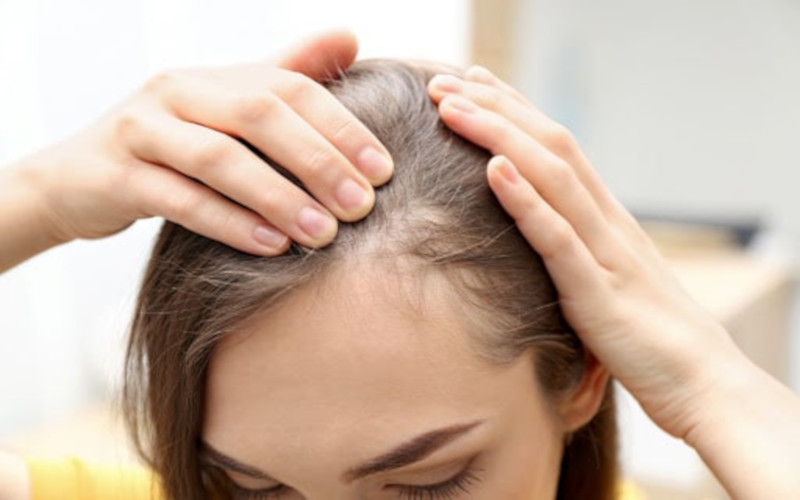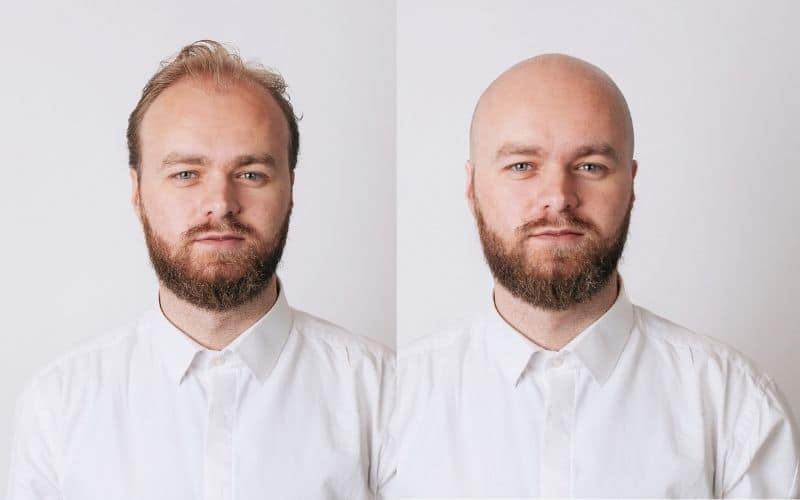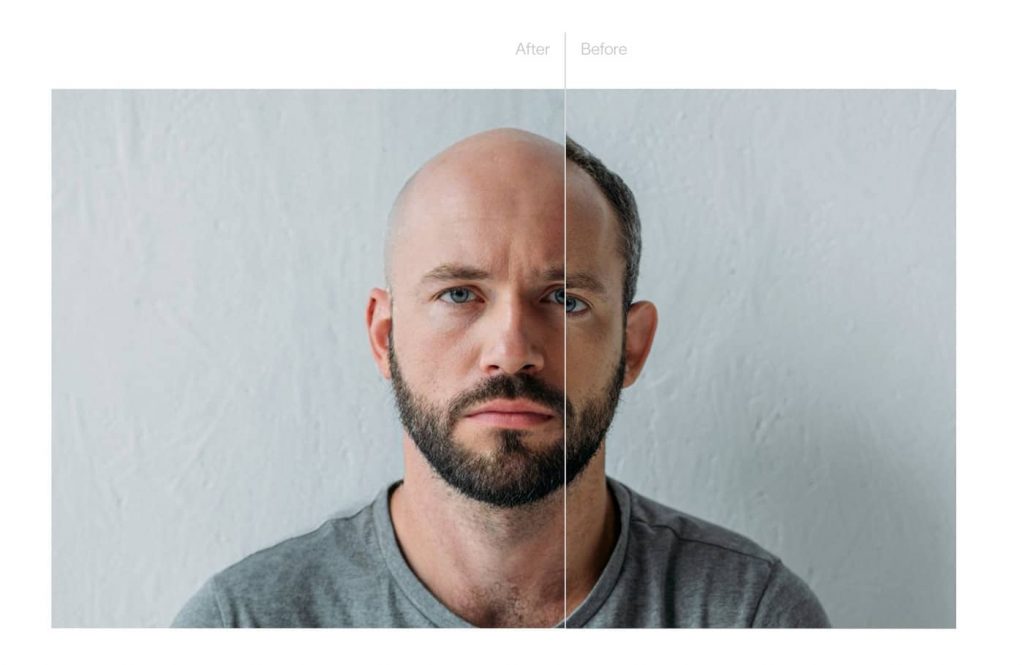Did you know that over 55% of women will experience some type of hair loss in their lifetime? Often the topic can be overlooked and seen solely as ‘a men’s issue’, but that statistic alone proves that isn’t true. Female Pattern Baldness is the most common type of hair loss and we’re here to talk about it.
By the time women hit menopause, around two-thirds of them will be suffering from thinning hair or bald spots. So we should talk about it.
What is Female Pattern Baldness?
The official name for FPB is androgenetic alopecia and it is a chronic progressive condition. It is the leading cause of hair loss in women and affects millions of worldwide. It typically starts between the ages of 40-60 but can affect younger women too.
In FPB the hair’s growing phase slows down and new hairs take longer to start the process again once the follicles have shed their old hair. Hair follicles will also shrink, causing thinner hair that easily breaks. Some hair follicles will shrink so much that they will stop growing new hairs completely.
Doctors divide female pattern baldness into three types:
- Type I is a small amount of thinning that starts around your part.
- Type II involves widening of the part, and increased thinning around it.
- Type III is thinning throughout, with a see-through area at the top of your scalp.
Whilst it is less likely that women will go completely bald as some men do, hair loss can still really affect some women. Throughout history, women have used their hair as a symbol of attraction, so losing it can be as much of a mental battle as it is as a physical one.
Luckily, in todays society where beauty standards are diversifying, there are many women embracing and rocking a bald head. Alternatively, medicine and technologies have come a long way to help with early prevention and treatments.
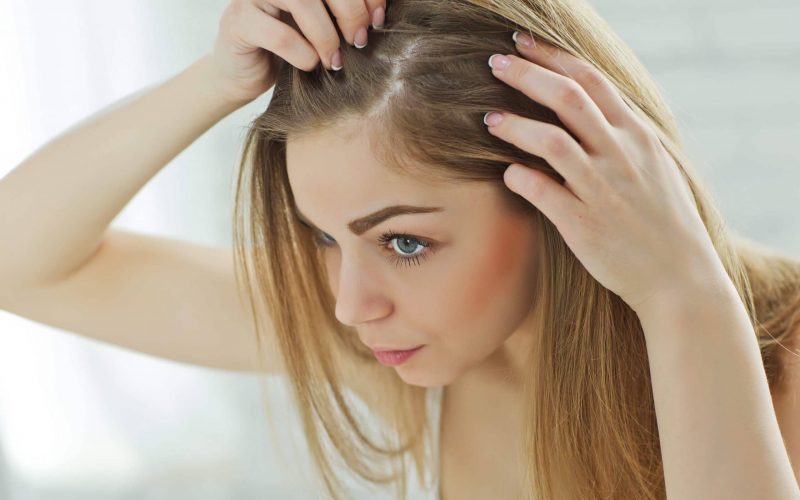
What causes hair loss in women?
FPB is the most common type of hair loss. It is hereditary which becomes increasingly likely with age. Smoking can also increase your chances but there are a few other reasons a woman can experience hair loss.
Medical conditions can cause hair fallout such as thyroid disease or scalp infections. Cancer patients going through chemotherapy will also experience hair fallout. Certain medications can also include hair loss as a side effect such as anti-depressants, medication for high blood pressure and arthritis.
Trauma can also lead to hair loss in extreme cases such as after an accident, death in the family or extreme weight loss.
Hormonal changes are another key factor as women will go through very dramatic changes throughout their lifetime. The most intense periods of hormone changes will be during pregnancy/child birth and menopause when hair loss is quite common. Changes in hormones due to birth control can also affect this.
Are male and female pattern baldness the same thing?
The two conditions both fall under the same scientific name of androgenetic alopecia. The act of hair loss and its causes are the same for both but certain characteristics do differ. The main difference is the pattern in which hair is lost from the scalp.
How are male and female pattern baldness different?
Whilst hair loss happens for both parties, the patterns in which hair is lost as well as the amount lost does differ.
For example; men will lose hair on the top of their head, mostly from front to back. They will start noticing a receding hairline around the temples or hair thinning around the crown.
For women, the hair part on top of the head will start to thin progressively and then thinning is noticed more evenly across the scalp.
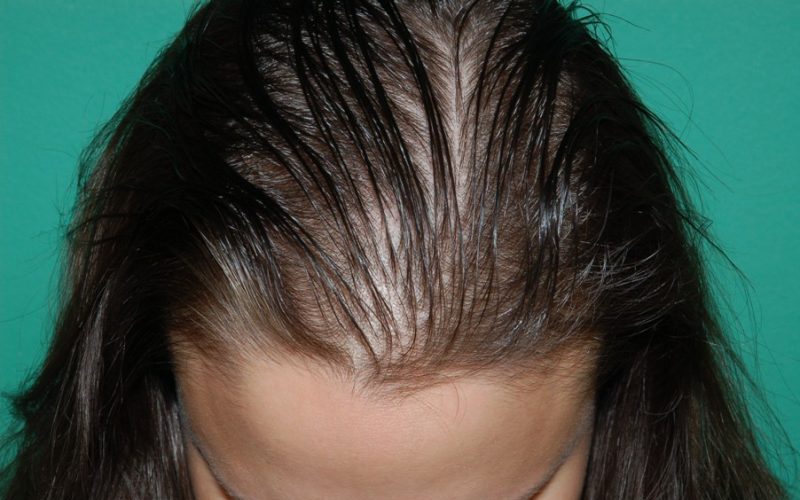
How to tell if you have Female Pattern Baldness
If you notice sudden thinning or patches of hair loss, consult a doctor or dermatologist. They can do a physical exam to see if there are any hormonal reasons to blame or if you need to change medication.
If you have not experienced any recent trauma, have no hormonal changes and are not on any medications then it may be likely that you have this genetic and irreversible type of hair loss.
Can you prevent Female Pattern Baldness?
You can’t prevent female pattern baldness because it is a genetic disorder relating to the hair follicle fallout. External factors do not play a role but they do play a role in hair breakage so making sure to take care of your hair will avoid hair thinning due to breakage.
How can you treat female hair loss?
Unfortunately, female pattern baldness is irreversible but hair loss due to other factors can be reversed in a few ways. Normal hair growth levels should return to normal a few months after the trauma or medication/hormonal change.
For women suffering FPB, if you catch it early enough there are treatments that can halt the process to prevent more hair loss and in some rare cases, help grow back some follicles. Unfortunately it is a long process however, and can take up to one year to see results. The medication you choose will have to be taken for the rest of your life.
What is the best treatment for female pattern baldness?
From medications to creams and surgery, lets take a look at your options.
Rogaine (minoxidil)
Medications are usually the first option people will try to recover hair. This treatment comes over the counter as a cream or gel-like solution which is applied straight to the scalp.
It seems to still be a bit of a mystery on how the treatment works, but it was originally used as blood pressure medication so it may have something to do with oxygenating the blood in the hair follicles, increasing blood flow and growth.
Ketoconazole
The drug ketoconazole is an antifungal medication used for fungal infections. It can also be used to aid in hair loss prevention. It is available as shampoo and helps with inflammation of the hair follicles which can be a contributing factor in FPB.
Hair tattoo
Hair tattoos or scalp micro pigmentation is a great way to give the illusion of thicker hair. The process is fairly painless and non-evasive and often the results are great.
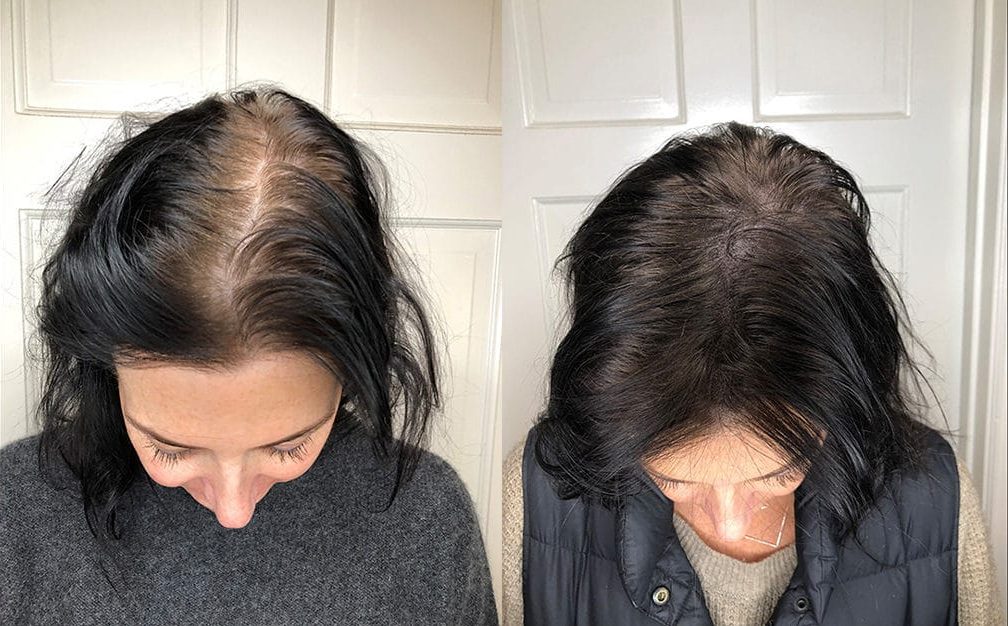
Wigs or extensions
Women have many options when it comes to wigs, hair extensions and other means of false hair to give hair thicker volume.
Can women get hair transplants?
Unfortunately, whilst hair transplants can be a great option for men, they are less successful for women. Only 2-5% of women will be approved for the surgery. This is due to the nature of the surgery and the pattern women usually lose hair.
For a hair transplant surgery, healthy hair follicles need to be transferred from a fuller area on the scalp to the bald area. For men (who tend to keep normal hair thickness around the base of their head) this is viable as these follicles remain healthy and not affected by DHT. Women tend to thin evenly across the scalp and DHT affects most follicles. This means there are usually no viable donor areas.
Hair loss in women can cause distress
Unfortunately, women can feel the affects of hair loss pretty harshly. A recent study showed that 52% of women were extremely upset by their hair loss, compared with 28% of men. In another questionnaire, 70% of surveyed women with hair loss had a negative body image and poorer self-esteem, with poorer sleep, feelings of guilt and restriction of social activities.
It’s important to understand how common hair loss in women is and to make sure you know you are not alone. Whether you decide to find a solution – medical or cosmetic – or embrace your new bald look, we hope we can help with information and support as much as we can.

